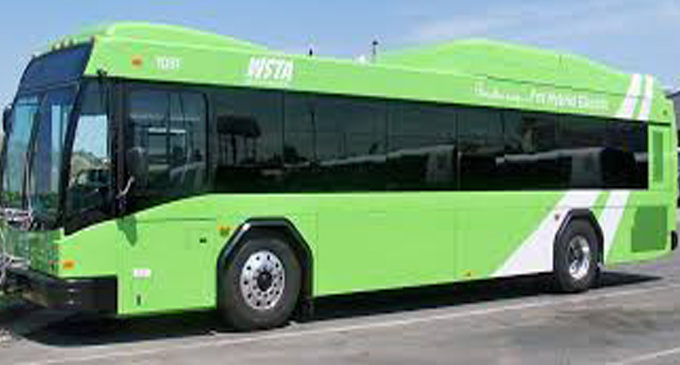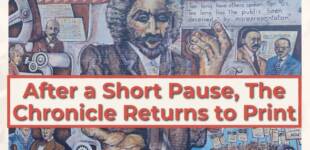Commentary: Research finds female bus riders bear brunt of long commuting times – and points to solutions

By John Ralley
New research on the city bus system from Winston-Salem State University’s Center for the Study of Economic Mobility (CSEM) finds that female riders commuting to work pay a higher overall economic price than their male counterparts. The research points to a surprising option: The city and/or businesses might be well served economically to subsidize the use of Uber, the popular ride-hailing app, for workers now using city buses. That option would be less expensive, in the long run, than relying only on buses with long commuting times to transport residents to their workplaces.
Public transportation, like almost every other public system, has struggled under the weight of the pandemic and had its existing problems aggravated. The Winston-Salem Transit Authority (WSTA), which runs the city bus system, has met the challenges, in part, by temporarily waiving fees for riders. It is a needed Band-Aid, but long-term solutions are crucial.
Since soon after its inception three years ago, CSEM research has helped lead the public dialogue on those solutions, starting with a 2018 study it commissioned that found that WSTA riders commuting to work spend an average of more than 11 hours a week on buses. CSEM’s work continued by commissioning Diana Greene’s documentary film “Bus Stop Jobs,” and more recently, through cooperative efforts with The Winston-Salem Foundation and Forsyth Technical Community College. CSEM continues the push with a July 2020 paper by CSEM Research Manager Zach Blizard, “Commuting on a Bus or with an Uber: The High Cost for Females From Commuting on the Public Bus in Forsyth County, N.C.” https://www.wssu.edu/academics/colleges-and-departments/college-of-arts-sciences-business-education/center-for-study-of-economic-mobility/our-research/_files/documents/bus-or-uber—ada-compliant.pdf.
Brittany Marshall, who spent the last several years commuting to work on WSTA buses and is the subject of “Bus Stop Jobs,” says the research is crucial. “The way the bus system is set up now, it is not accessible,” she said. This spring and summer, she got her driver’s license and bought a car, after a long struggle. She continues to speak out for reform for all the people she knows who have no alternative to get to work but WSTA.
Donna Woodson, the head of WSTA, is exploring that reform.
Blizard’s paper, based on research he did with CSEM Director Craig Richardson, expands on the 2018 report.
Studies find evidence that gender roles tend to be slightly more traditional in low-income families. Blizard writes that “females more typically shoulder a ‘double burden’ of family and work, as compared to males. As a result, females in the labor market may prize flexibility in hours, closeness to shopping areas and other non-monetary benefits. Hence, they are likely to take cuts in their wages as a tradeoff for these benefits.”
The paper figures commuting hours and hourly wages, arguing that the “commuter tax” is costly in terms of lost work hours, causing the average female rider to lose out on $113.29 weekly. If the same rider used an Uber, however, she would only lose out on $24.62 weekly. “Using an Uber might be the better commuting option in terms of minimizing economic costs,” Blizard writes. “This is undoubtedly a surprising and counterintuitive finding, since paying for an Uber is expensive. However, as we have seen, the cost of lost time can be even more expensive.”
The paper suggests that subsidizing Uber use, possibly through business and/or municipal funding, might be a sensible alternative, and notes that this could potentially benefit male riders as well. Municipalities in Florida, Indiana, California, Iowa and South Carolina are trying this. The Charlotte transit system has started a pilot program with Uber’s competitor, Lyft, with encouraging initial results, according to the paper.
As another alternative, the paper notes that other cities have reformed their bus routes, transforming from the conventional hub-and-spoke model used here, to ones better suited to get riders to their workplaces in a timely fashion.
Woodson, the WSTA head, said in an email, “We have not discussed providing Uber passes or the revamping of routes so to speak. We have been in discussion about our route structure. … One common concern from the community was the new route structure caused several riders to lose jobs. This was and still is a concern for me as a transit manager. Public transit needs to provide access to employment, education, medical, grocery, retail and all the essentials we need to provide quality of life.”
That is a good start, as was WSTA’s temporarily waiving fare costs in response to the pandemic. Sarina Jarrahi Horner, a Forsyth Country Day School student who consulted with CSEM Director Richardson, had pushed for that. That was a crucial short-term fix. As Richardson noted recently, however, the cost of the fare pales in comparison to the long hours commuting to work, time that female riders could spend in job advancement, and helping their children with schoolwork.
Solutions are needed. CSEM research, with community partners, can help lead the way.
John Railey, raileyjb@gmail.com, is the writer-in- residence at CSEM. For more information, visit www.wssu.edu/csem.










